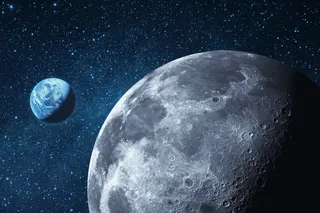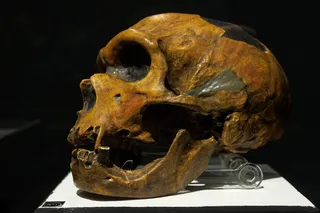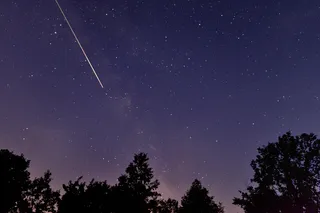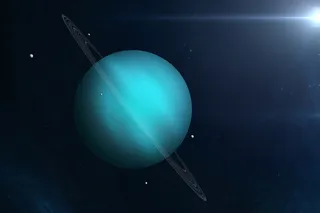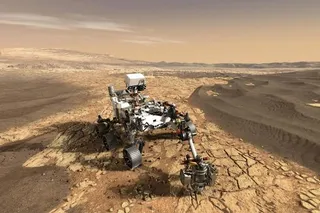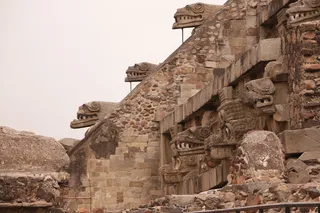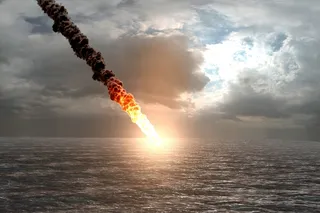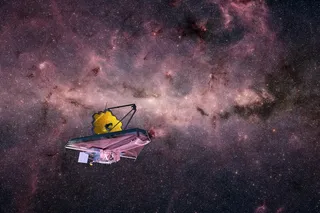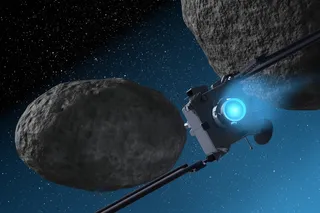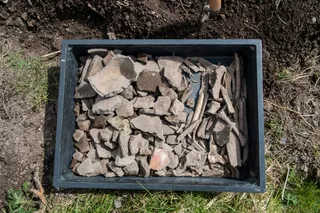Scientists using data from the recently-Moon-smacked Kaguya spacecraft have found evidence of radioactive elements on the lunar surface, including, for the first time, uranium!
That’s pretty cool. It’s a little unexpected to me, too. One of the key aspects of the Moon is that it’s not as dense as the Earth — in fact, it’s just a bit more than half the Earth’s density — so you don’t expect it to have a lot of denser materials. Also, dense materials tend to sink and lighter ones float in a liquid, and we know the Moon was once entirely molten. So most of the uranium (which is among the densest of all elements) should be near the Moon’s core, not on the surface.
Most, but not all. It appears there is some on the surface!
[Update: I received some comments and email (hi Emily!) about this. I was trying to simplify the story about dense stuff sinking and I suppose I left off too much; of course, since we find uranium on the Earth’s surface it can’t all sink down. Basically, uranium likes to bind with oxygen, and that makes it into a less dense molecule which doesn’t just drop all the way down to the core, and that’s why it can be found on the Earth’s surface. I appreciate the comments on this — they keep me honest and usually give me a chance to learn something.]
The way you detect uranium is by gamma rays (having an old prospector pan for it probably won’t get you far, even if he has a Geiger counter). The nucleus of a uranium atom is packed with protons and neutrons; Uranium-238, for example, has 92 protons and 146 neutrons all coexisting in a little ball. Because of the weird ways of the quantum mechanical world, this nucleus is unstable, and after a while it spontaneously ejects a little clump of two protons and two neutrons: a helium nucleus, or what’s called for historical reasons an alpha particle.
Along with this alpha the uranium also emits two gamma rays, photons of light with very high energy. These photons go screaming off in some random direction. In this case, enough gamma rays were sent to the then-still-orbiting Kaguya’s gamma ray detector that it was able to see them. Different elements decay in different ways, and so they send off gamma rays with different energies, too. Kaguya’s detector was built to distinguish between these different gamma rays, and that’s how the scientists knew they had found uranium.
And it’s also how they found other elements like thorium, potassium, oxygen, magnesium, silicon, calcium, titanium, and iron, too. We already knew that there was oxygen and a few of those others on the lunar surface, but this method of mapping from orbit is effective in finding these particular flavors (OK, isotopes) of the elements.
What does this mean? Practically, not a whole lot for now. It’s not like the first astronauts to go back to the Moon will get rich mining uranium, or even have enough to use it for power. In the future, however, any colonists will have to do large-scale mining to get access to aluminum, oxygen, and other things they need to build and survive on the Moon. Maybe they’ll find uranium in useful quantities then. It’s not a good reason to go back to the Moon, but it’s something for future space travelers to remember.
But what this does do is give us more clues into the birth, history, and evolution of the Moon; how it’s changed since it formed over 4 billion years ago. We’re pretty sure the Moon formed when a Mars-sized object slammed into the Earth, and the ejecta coalesced into our satellite. But we can always learn more details, and those help us understand just how this happened, and what has changed since.
More knowledge is always good. You never know where it may lead. This is another step in understanding the Moon, and one day it’ll be the home for a lot of people. The more we know, the better.
Prospector image from ToOliver2’s Flickr photostream.
http://www.flickr.com/photos/tooliver/ / CC BY 2.0


